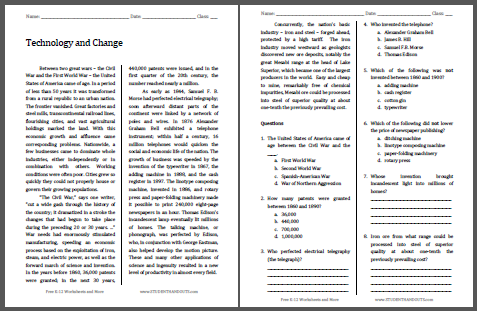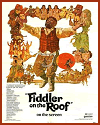Technology and Change |
 Between two great wars – the Civil War and the First World War – the United States of America came of age. In a period of less than 50 years it was transformed from a rural republic to an urban nation. The frontier vanished. Great factories and steel mills, transcontinental railroad lines, flourishing cities, and vast agricultural holdings marked the land. With this economic growth and affluence came corresponding problems. Nationwide, a few businesses came to dominate whole industries, either independently or in combination with others. Working conditions were often poor. Cities grew so quickly they could not properly house or govern their growing populations.
Between two great wars – the Civil War and the First World War – the United States of America came of age. In a period of less than 50 years it was transformed from a rural republic to an urban nation. The frontier vanished. Great factories and steel mills, transcontinental railroad lines, flourishing cities, and vast agricultural holdings marked the land. With this economic growth and affluence came corresponding problems. Nationwide, a few businesses came to dominate whole industries, either independently or in combination with others. Working conditions were often poor. Cities grew so quickly they could not properly house or govern their growing populations."The Civil War," says one writer, "cut a wide gash through the history of the country; it dramatized in a stroke the changes that had begun to take place during the preceding 20 or 30 years. ..." War needs had enormously stimulated manufacturing, speeding an economic process based on the exploitation of iron, steam, and electric power, as well as the forward march of science and invention. In the years before 1860, 36,000 patents were granted; in the next 30 years, 440,000 patents were issued, and in the first quarter of the 20th century, the number reached nearly a million. As early as 1844, Samuel F. B. Morse had perfected electrical telegraphy; soon afterward distant parts of the continent were linked by a network of poles and wires. In 1876 Alexander Graham Bell exhibited a telephone instrument; within half a century, 16 million telephones would quicken the social and economic life of the nation. The growth of business was speeded by the invention of the typewriter in 1867, the adding machine in 1888, and the cash register in 1897. The linotype composing machine, invented in 1886, and rotary press and paper-folding machinery made it possible to print 240,000 eight-page newspapers in an hour. Thomas Edison's incandescent lamp eventually lit millions of homes. The talking machine, or phonograph, was perfected by Edison, who, in conjunction with George Eastman, also helped develop the motion picture. These and many other applications of science and ingenuity resulted in a new level of productivity in almost every field. Concurrently, the nation's basic industry – iron and steel – forged ahead, protected by a high tariff. The iron industry moved westward as geologists discovered new ore deposits, notably the great Mesabi range at the head of Lake Superior, which became one of the largest producers in the world. Easy and cheap to mine, remarkably free of chemical impurities, Mesabi ore could be processed into steel of superior quality at about one-tenth the previously prevailing cost. |
Click here to print. Answer Key: (1) A - First World War; (2) B - 440,000; (3) Samuel F.B. Morse; (4) A - Alexander Graham Bell; (5) C - cotton gin; (6) A - ditching machine; (7) Thomas Edison; (8) Mesabi. |
 |
|---|
Text courtesy of the U.S. State Department, Bureau of International Information Programs, 2005 |











